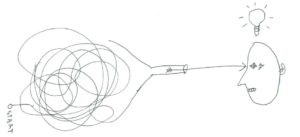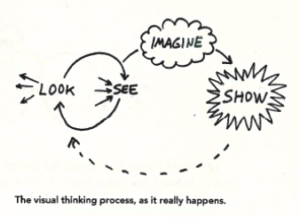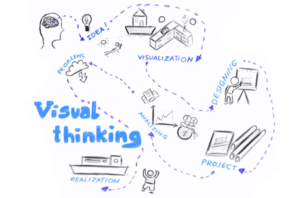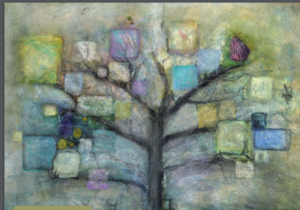Imagination and Association
We are not linear thinkers. While our reading and writing is linear, but out thinking and assimilating the world around us is multi-dimensional – its full of ideas and images and is constantly evolving.
As designers, we all need to be able to put our thoughts down on paper. For every design exercise we gather a lot of information. Being able to put this knowledge on paper in a visual exercise frees the thinking and helps begin engaging in the design exercise and this is a continuous process.
If we look at the research material on great thinkers and philosophers such as Leonardo da Vinci, Pablo Picasso, Thomas Edison, Charles Darwin, they all use a combination of images, words, and diagrams to record and explore their ideas.
Diagrams Graphically Construct our Knowledge
Diagramming can become an essential tool for working in a team. It enhances creativity and problem solving, gives value to our ideas, and organizes thoughts. It frees the mind and helps us excel at what we do, by enabling us to better structure our thoughts, and to express our ideas more clearly. The evolving diagram becomes a vehicle to take us from our unresolved state to a more organized state. In the process we learn to analyze the information that we collect and represent it for discussion in a clear structured manner.
Diagrams are a visual thinking tool that helps us put our thoughts down with color, words, lines and rhythm. Whatever we need to think about more effectively and exercise our imagination. They help us to organise our thoughts. Its an image with network of associations.
Visual diagrams help in problem solving, creativity, management and scheduling. Once having put these thoughts down in a diagrammatic manner, it helps to be structured and confident in sharing, developing and creating concepts. It allows continuity and development in your work.
Tools for Diagramming
Use all the tricks and of the trades that a graphic designer would use for creating an advertisement: Lines, images, visual metaphors, colours to convey ideas. Remember that it is not a drawing exercise but rather an effort to convey ideas, and, importantly, to stay focused on the message:
• Free-form, as well as geometrical figures to segregate your thoughts
• Linear graphics to make connections within the thoughts.
• Colour provides intensity and focus for visual retention
• Various Fonts and sizes of the letters
• Words and short-hand notations to clarify our ideas
• Thinks of images to reflect our ideas
• Construct associations to enrich this visual diagram
In short, diagramming allow us to better convey our ideas. Seeing everything interrelated in one place gives a comprehensive picture.
Some tips for effective diagramming:
• Begin small
• Make sure there is a theme or a concept
• Don’t make it too neat, allow flexibility to develop/grow
• Categorize and isolate ideas
• Make connections between these thoughts and ideas
• Use visual metaphors
• Sequential content for timeline development






